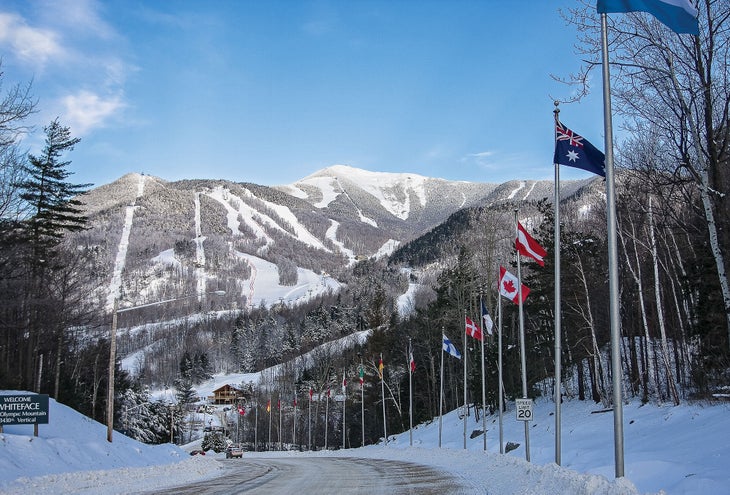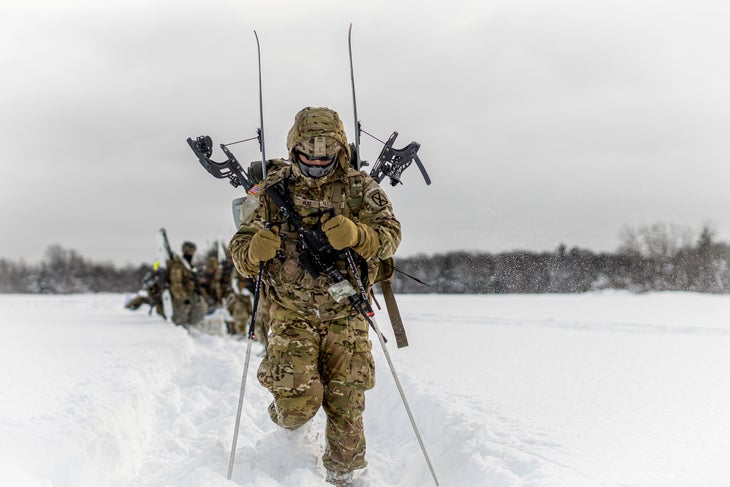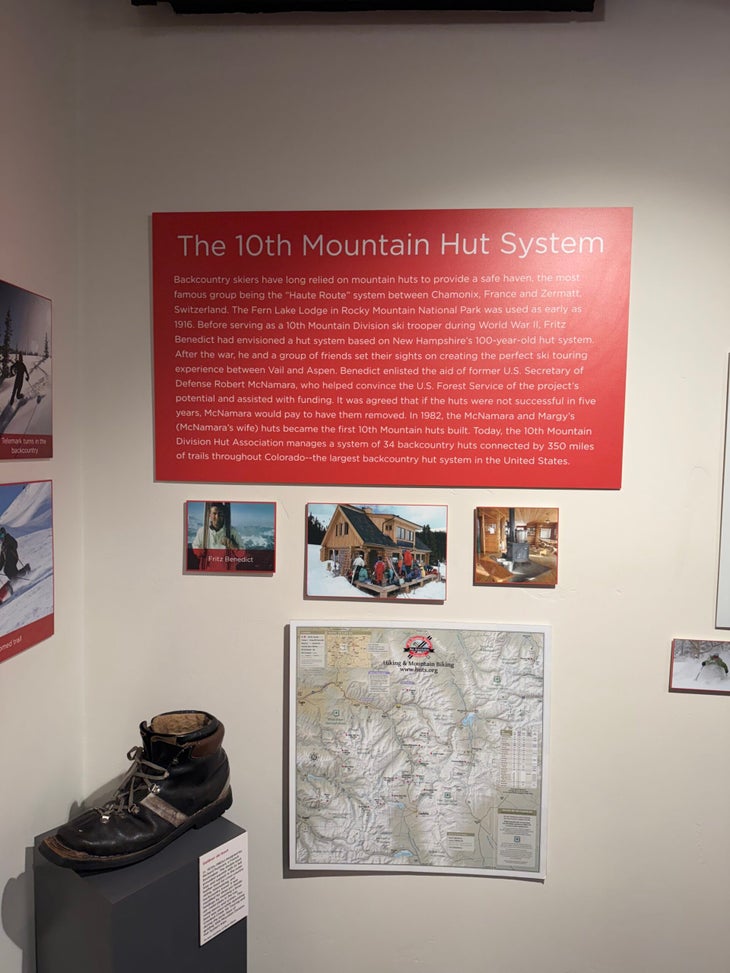“], “filter”: { “nextExceptions”: “img, blockquote, div”, “nextContainsExceptions”: “img, blockquote, a.btn, a.o-button”} }”>
Heading out the door? Read this article on the new Outside+ app available now on iOS devices for members!
>”,”name”:”in-content-cta”,”type”:”link”}}”>Download the app.
If you think American ski culture began with a few stoked ski bums in the 1970s chasing powder in old Broncos, you’re missing a major chapter. The true golden age of modern U.S. skiing started after World War II, when members of the 10th Mountain Division — an elite Army unit trained for alpine warfare — landed stateside with skis on the brain and mountains in their blood.
“These guys came back and were buying [military surplus skis] for pennies on the dollar and starting ski schools and teaching people,” said First Sergeant Daniel Fields of the Mountain Training Group, 10th Mountain Division, in an interview with SKI. Veterans of the 10th started ski areas across the nation — including Mt Bachelor, Vail, and Sugarbush — and founded everything from gear companies (Nike) to outdoor schools (NOLS, National Outdoor Leadership School).
Sergeant Fields shared a document compiled by 10th Mountain Division veteran Dick Wilson that outlines all the known ways World War II vets were involved with the ski industry after the war. It is 16 pages long and includes names like Jack Murphy, who founded and managed Sugarbush in Vermont, and Bob Livermore, an Olympian who helped found the National Ski Patrol (along with 10th icon, Charles Minot Dole). Around 30 of the veterans listed have been inducted into the U.S. National Ski Hall of Fame for their contributions to the sport.
“The impact that they’ve had has lasted eight decades or more. … I don’t think there’s a way to measure the impact that they’ve had,” shared Sergeant Fields.
What follows is a look at some of the ski spots with an inherent link to the 10th Mountain Division.
Vail Ski Resort — Colorado
At Vail, the entire resort is steeped in 10th Mountain heritage. The ski area was co-founded by 10th veteran Pete Seibert (a U.S. National Ski Hall of Fame member) and managed by veteran William “Sarge” Brown for almost 20 years.
“Sarge’s Shelter at Mid-Vail lodge is named in his honor,” shared Sergeant Fields. “Other runs at Vail Mountain with a nod to the 10th are Avanti and Pete’s Bowl.” But easily the most iconic run with ties to the 10th is Riva Ridge, which was named after the division’s dramatic and pivotal battle on Riva Ridge in the Italian Apennines during WWII.
Whiteface Mountain — New York

Whiteface was not only developed by 10th veterans, but Sergeant Fields shared that, “The mountain itself is dedicated to the veterans of the 10th.” The ski area has a popular run called 10th Mountain Division Glades and its own Riva Ridge.
Sergeant Fields adds that “the base lodge has an entire wall of photos and plaques from 10th soldiers and units.”
Mt. Rainier — Washington
Most people associate Camp Hale in Colorado with the 10th, but the division was initially based at Camp Murray outside Tacoma, Washington. They trained on Mt. Rainier, often running military exercises on the 14,410-foot peak itself, where the division’s first recruits eventually became ski and mountaineering instructors.
Today, you can follow in the footsteps of 10th soldiers by backcountry skiing at Mount Rainier National Park. A popular backcountry route runs up to Camp Muir and descends through the Muir snowfields.
Ski Cooper & Chicago Ridge — Colorado
Ski Cooper is located just down the road from Camp Hale, a high-elevation training facility constructed in 1942 so the 10th could practice climbing, skiing, and cold-weather survival. For that reason, parts of the ski area and nearby Chicago Ridge were used for winter warfare training.
Ski Cooper has a chairlift named after the 10th and is generally considered one of the most historically authentic skiing experiences related to the division. You can also backcountry ski the neighboring Chicago Ridge, which sits at 12,600 feet.
Dry Hill Ski Area — New York

Dry Hill is located near Fort Drum, where the current 10th Mountain Division is based. It is where Sergeant Fields, who in addition to leading the 10th’s Mountain Training Group, is a working ski patroller. He shares that “Dry Hill Ski Patrol is also made up of many currently serving 10th soldiers as well as many former/retired 10th soldiers.”
The small ski area also has a run named Hefti’s Hollow that was named in honor of Julius “Bud” Hefti, who served with the 10th in World War II and later as a ski instructor at Dry Hill Ski Area.
Mt. Bachelor — Oregon
Mt. Bachelor is one of the most iconic modern-day ski resorts that exists because of the 10th Mountain Division. The ski area was started by veteran Bill Healy after World War II with one Poma lift and two rope tows (it was originally called Bachelor Butte). Healy was involved in the mountain until he died in 1993.
Sun Valley, Idaho
Nelson Bennett, a veteran of the 10th, cut many of Sun Valley’s most famous runs by hand and led the Sun Valley Ski Patrol, which was one of the nation’s first ski patrols. He also managed the U.S. Olympic ski team for some time and is a member of the U.S. National Ski Hall of Fame.
Sun Valley is also where the 10th filmed some of their training films, including “The Basic Principles of Skiing,” which was an official 1941 ski training film funded by the government.
10th Mountain Division Hut System — Colorado

The 10th Mountain Division Hut System was formed by several Aspen skiers, including 10th Mountain Division veteran Fritz Benedict. The network of backcountry huts runs primarily between Aspen, Vail, and Leadville and is used by modern-day backcountry skiers, hikers, and bikers. Online, the official statement reads: “Our name honors the men of the 10th Mountain Division of the U.S. Army, who trained during World War II at Camp Hale in central Colorado. Hut visitors share the special spirit of these individuals, especially their pursuit of excellence, self-reliance, and love of the outdoors.”
